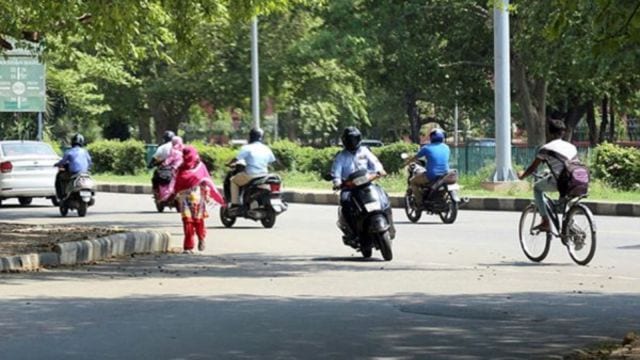Old bikes with poor mileage a major source of pollution: DTU study
Two-wheelers make up 72% of India’s urban vehicle fleet; study recommends current scrappage policy, based solely on age, needs revamp.
 It analysed real-time exhaust data from 575 two-wheelers tested at Pollution Under Control Certification centres in Delhi. (Representational image)
It analysed real-time exhaust data from 575 two-wheelers tested at Pollution Under Control Certification centres in Delhi. (Representational image)A study examining exhaust emissions from two-wheelers in India has found that apart from age of a vehicle, mileage, too, strongly influences the levels of carbon monoxide (CO) and hydrocarbons (HC) released from motorcycles and scooters. The study goes on to recommend that India’s current scrappage policy, based solely on age, needs a revamp.
Titled ‘Revisiting transport policy through idling exhaust measurements from two-wheelers – a case study’, the study was conducted by researchers from Delhi Technological University, in collaboration with Jacobs Engineering Group and the University of Chemistry & Technology, Prague.
It analysed real-time exhaust data from 575 two-wheelers tested at Pollution Under Control Certification centres in Delhi. The vehicles examined were BS III and BS IV-compliant petrol-driven two-wheelers.
Two-wheelers lead the automobile segment, as they make up 72% of India’s urban vehicle fleet, and “traffic intersections and road congestion scenarios in countries like India” indicate that it’s an important area of research, the study stated.
To conduct the study, mass concentrations of tailpipe exhaust constituents were recorded. Vehicle-specific parameters such as mileage, age, kerb weight and applicable in-use emission norms were noted, along with engine-specific characteristics such as ignition type and capacity, among others.
The researchers found that age and mileage each have a “very strong positive correlation” with tailpipe carbon monoxide and hydrocarbon emissions in idling mode.
According to the study, 84.6% of the change in carbon monoxide levels was linked with age. “If age increases by 1.000 units, the CO levels increase by 0.920 units… Overall, age has a very strong positive correlation with CO of high magnitude,” it said.
Noting that carbon monoxide is a byproduct of incomplete combustion, in which the ignition mechanism consumes less oxygen to fuel mass ratio, the researchers said: “The strong influence of age on CO can be attributed to the fact that as a vehicle ages, the ignition system becomes less efficient, or older cars may have outdated versions of ignition systems compared to modern vehicles. Also, as a vehicle ages, the emission control system becomes unreliable, and newer cars have better emission controls such as exhaust gas recirculation systems.”
Similarly, it found “age is responsible for 81.5 % of the change in HC levels, hence, the age and HC exhaust emissions are strongly correlated”.
The study further said, “Although the vehicle age and mileage go hand in hand, implying that old vehicles will usually clock more mileage too, however, few studies have strongly pointed at the mileage to be a more accurate parameter affecting the exhaust emission, and not just the age.”
The CO emission range reduced from 1.5-2.75 % at idling to 0.25-1.5 % at idling in the case of BS III and BS IV compliant two-wheelers.
The study concluded that India’s current emission recertification for two-wheelers “is only based on idling CO and HC measurements” and therefore “does not consider the high-idling condition and real-world loaded operation”, which means it does not reflect the vehicle’s actual emission status. It recommended “an upgraded emission certification system duly considering the mentioned variable”.
The researchers also said that the phasing-out policy should “incorporate mileage as an important variable and not just the age”, and underlined that policymaking must “aptly consider the status of the applicable emission standard while framing or upgrading such policy in the larger context of the overall transport sector”.







